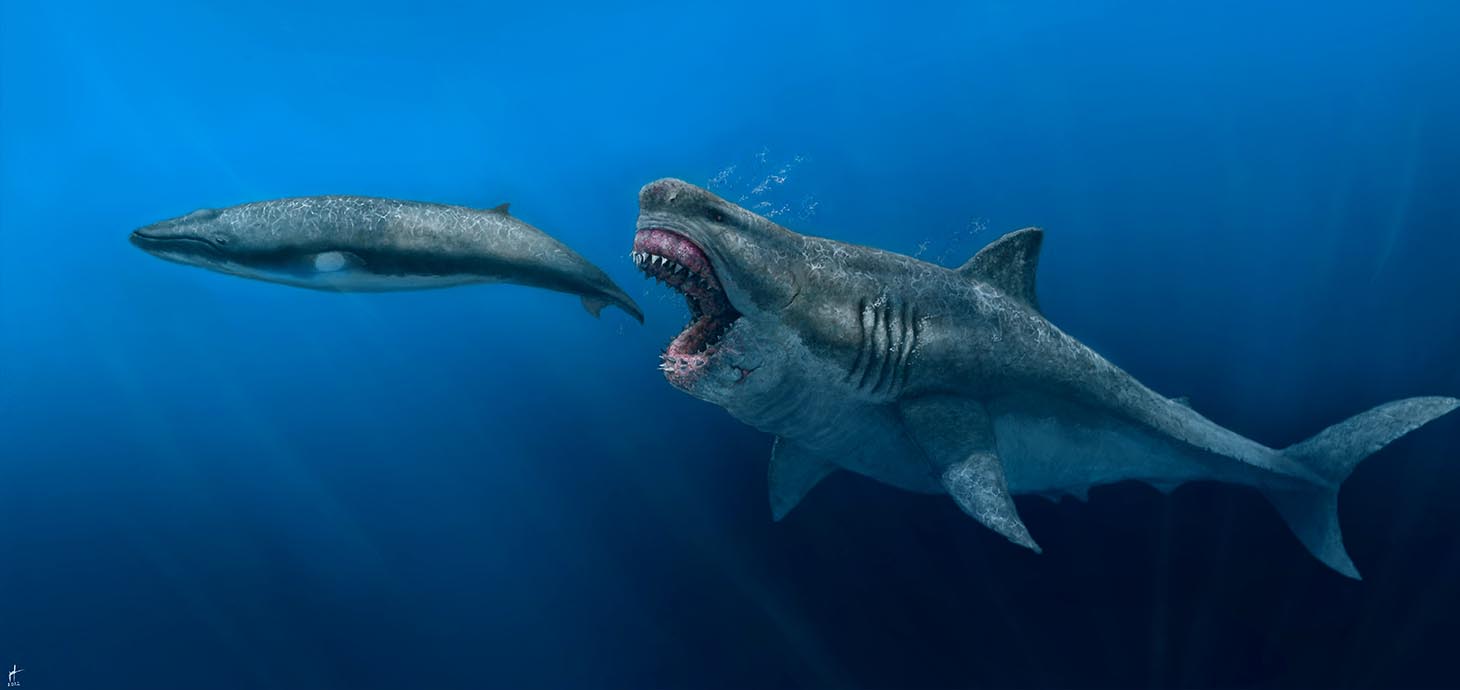
Thanks to a megalodon which was discovered in the 1860s, an international team of scientists, including some from Swansea University, have been able to create, what is to date, the most complete 3D reconstruction of a megalodon – the largest shark that ever lived.
Sharks possess a soft cartilaginous skeleton - their bones are closer to a human nose than they are to a femur – making it unlikely that their remains would fossilise, leaving scientists with little to look at other than dental remains to study the now extinct megalodon.
Yet against all odds, a sizeable portion of a megalodon’s vertebral column fossilised after the creature died in the Miocene oceans of Belgium at the age of 46 about 18 million years ago.
Jack Cooper, the study’s first author and a PhD student at Swansea University, explains “Shark teeth are common fossils because of their hard composition which allows them to remain well preserved. However, their skeletons are made of cartilage, so they rarely fossilise. The megalodon vertebral column from the Royal Belgian Institute of Natural Sciences is therefore a one-of-a-kind fossil which has enabled us to carry out this unique study and create the 3D model.”
The results from the 3D model of this particular megalodon revealed that it:
- Was 16 meters long.
- Weighed more than 61 tonnes.
- Could swim at around 1.4 meters per second.
- Required almost 100,000 kilo calories a day.
- Had the stomach volume of around 10,000 litres.
The results also suggest that the megalodon could travel long distances and could eat whole prey of up to eight meters long – the size of modern killer whales, today’s top ocean predator.
The research team, which includes researchers from Switzerland, UK, USA, Australia and South Africa, first used 3D scans of the fossilised Belgian vertebrae to reconstruct the spinal column, scaling it up to real size. They then recreated the skull of a megalodon, using an existing 3D scan of the skull of a great white shark, which was scaled up and fitted with 3D scans of a megalodon dentition. The resulting skull was then attached to the vertebrae, producing a base model of megalodon’s skeleton. A 3D scan of the full body of a great white shark was used to add “flesh” around the megalodon skeleton, producing a full 3D model of its whole body.
“Weight is one of the most important traits of any animal. For extinct animals we can estimate the body mass with modern 3D digital modelling methods and then establish the relationship between mass and other biological properties such as speed and energy usage,” said co-author John Hutchinson, professor at the Royal Veterinary College in the UK.
To fulfil such energetic demands, the megalodon would have needed to eat creatures packed full of calories like marine mammals, who are known to have calorie-rich flesh. Feeding upon whales up to sizes rivalling today’s orcas may have allowed the shark to swim thousands of miles across oceans without eating again for two months.
The study’s lead author Catalina Pimiento, Professor at the University of Zurich and Senior Lecturer at Swansea University, said: “These results suggest that this giant shark was a transoceanic super-apex predator. The extinction of this iconic giant shark likely impacted global nutrient transport and released large cetaceans from a strong predatory pressure.”
The complete 3D model can now be used as a basis for future reconstructions and further scientific research. The new biological inferences drawn from this study represent a leap in our knowledge of this singular super predator and help to better understand the ecological function that megafaunal species play in marine ecosystems, and the large-scale consequences of their extinction.
